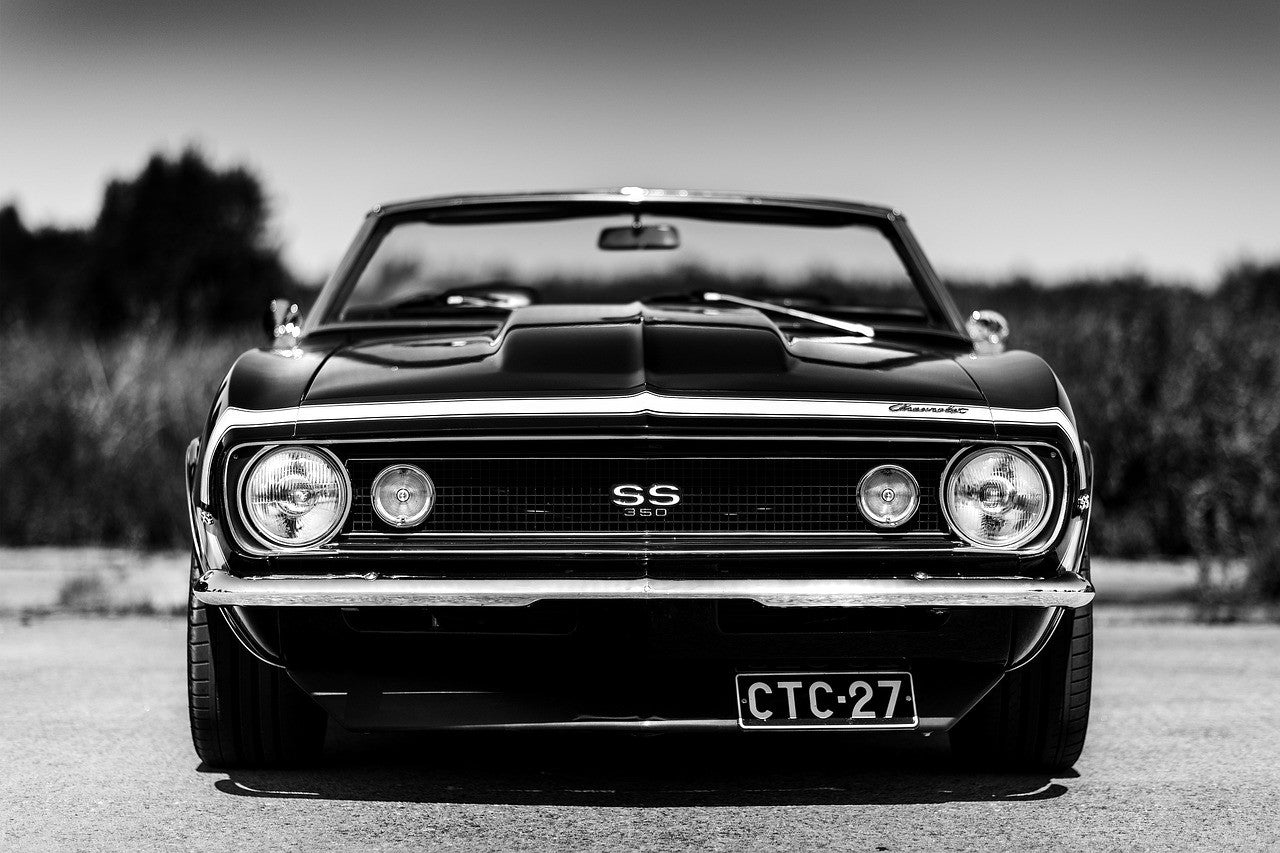As a hot rod enthusiast, few things get me more excited than the raw power and bold styling of American muscle cars. Their thunderous engines, iconic silhouettes, and rebellious attitude encapsulate the essence of automotive freedom. Ever since the first high-performance V8 models rolled off assembly lines in the early 1960s, muscle cars have occupied a special place in car culture.
What is a Muscle Car?
Muscle cars are defined as high-performance coupes and 2-door sedans powered by big displacement V8 engines. They emerged as a uniquely American response to the lightweight European sports cars of the 1950s and early 60s. Muscle cars emphasized straight-line speed and acceleration rather than handling and braking. Key identifying traits include rear-wheel drive, two doors, spacious interiors, affordable prices, and outrageous engines stuffed under long hoods.
History of American Muscle Cars
The genesis of the American muscle car can be traced back to 1949, when Oldsmobile dropped a high-compression V8 into its small two-door 88 coupe, creating the first “performance package.” But muscle cars really took off in 1964. Seeking to attract younger buyers, the Big Three automakers set off a horsepower race, introducing hot rod versions of their popular compacts and intermediates like the Pontiac GTO, Plymouth Road Runner, Chevy Chevelle SS, and Ford Mustang Mach 1.
Popular Muscle Cars of the 1960s/70s
The 1960s and early 70s are considered the golden era of American high-performance cars. Some standouts included the ’67 Pontiac GTO, ’70 Buick GSX, ’70 Plymouth Hemi ‘Cuda, ’69 Dodge Charger Daytona, ’69 Boss Mustang 429, ’69 Camaro ZL1, and king-of-the-streets, the ’70 Chevelle LS6. These factory hot rods could light up tires and rip from 0-60 mph in under 7 seconds—seriously potent performance for the era.

Muscle Cars of the 1980s/90s
The muscle car market nearly died out in the early 70s due to rising insurance costs, fuel prices, and emissions regulations. Performance wallowed throughout the 80s. But beefy V8 RWD models from the Big Three automakers, like the ’83 Hurst/Olds, ’87 Buick GNX, ’89 Pontiac Firebird Trans Am GTA, and Fox-body ’93 Mustang Cobra kept the spirit alive. A lucrative resto-mod scene also emerged during this time.
Modern Muscle (2000-Today)
The 2000s saw Detroit reassert domestic performance supremacy against imports with the return of legends like the Dodge Charger SRT8, reborn Pontiac GTO, and modern Dodge Challenger. Today’s 21st century muscle marvels like the 720-hp Dodge Hellcat Redeye, the 650-hp Ford Mustang Shelby GT500, and the 455-hp Cadillac CT5-V Blackwing carry the tradition forward with new levels of power and technology unimaginable to the forefathers of muscle.

Muscle Car Restoration
With iconic nameplates like Chevelle, Camaro, Barracuda, and others appreciating in value, restoring vintage American muscle cars has become a pillar within the larger collector car hobby. Whether fixing up a weathered GTO found sitting in barn or completing a nut-and-bolt rotisserie restoration on a Shelby Mustang, demand continues grow for shops and builders specializing in bringing old muscle back to better-than-new condition.
Impact on Popular Culture
Through movies, music, and television muscle cars have become an integral part of American pop culture. Stars like Steve McQueen, Vin Diesel, and Burt Reynolds immortalized the ’67 Fastback Mustang, 1970 Dodge Challenger, and 1977 Firebird Trans Am on the silver screen. Detroit’s high-performance pedigrees were celebrated in song by the Beach Boys to Led Zeppelin. Today AM radio ads still bellow about the Hemi and SS badges. Muscle cars infusion into American mythos is boundless.

The Muscle Car Wars
No one can mention muscle cars without highlighting the cutthroat competition between brands and models in the 1960s and 1970s. Ford and Mopar were in constant battle against each other and GM, fighting for supremacy at stoplight drags and the sales charts. Companies poured money into racing programs, explored radical performance concepts in the pursuit of horsepower at any cost. These factory-backed skirmishes fueled the innovation and experimentation that created the most outrageous street performers in automotive history.
The Decline of Muscle
Increasing regulation, soaring insurance rates, and the 1970s fuel crisis nearly obliterated the muscle car segment by the late 1970s. Stricter corporate average fuel economy (CAFE) standards and the shift towards emissions controls forced automakers to abandon big-block V8s. Performance icons like the Chevelle, Road Runner, GTO, and 440 ‘Cuda departed, leaving a void until a new generation rediscovered these beasts.
The Modern Resurgence
Thankfully the last two decades have witnessed monumental muscle car resurgence. Automakers have rediscovered these roots, embracing iconic nameplates and modern interpretations of bygone legends. The 5th and 6th gen Camaro, latest Mustangs, and reborn Challengers have their sights aimed squarely at recapturing the muscle magic. Aftermarket support is bigger than ever too, with the American performance aftermarket now a $50 billion industry catering to gearheads.

